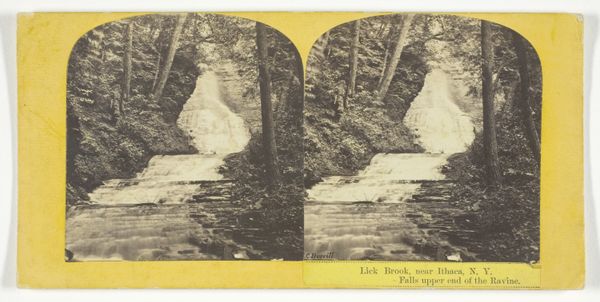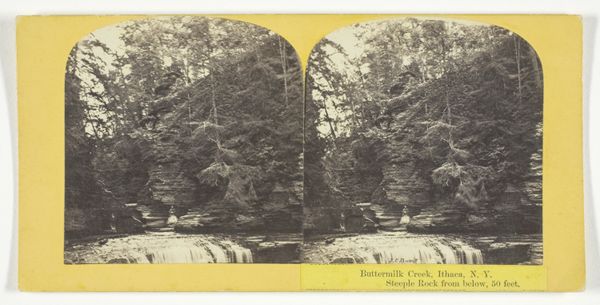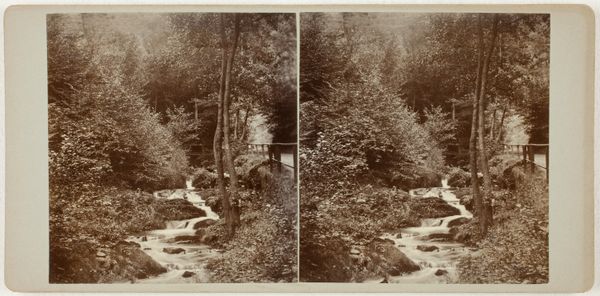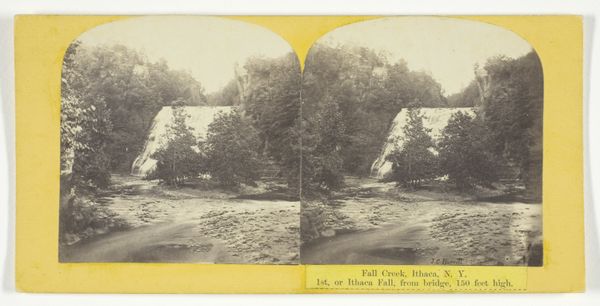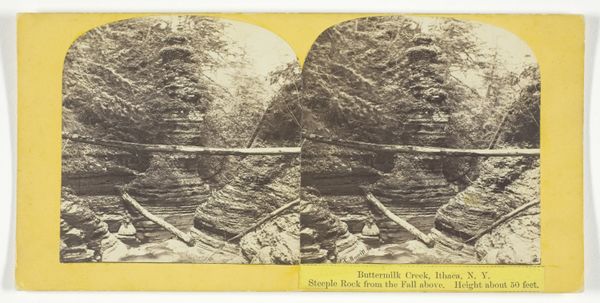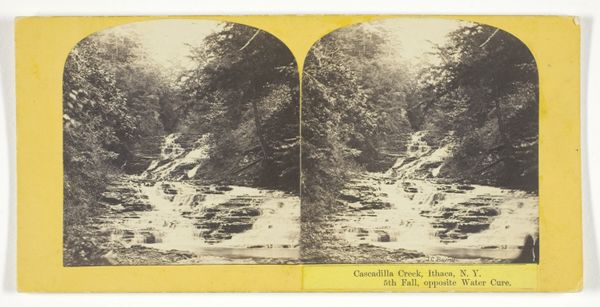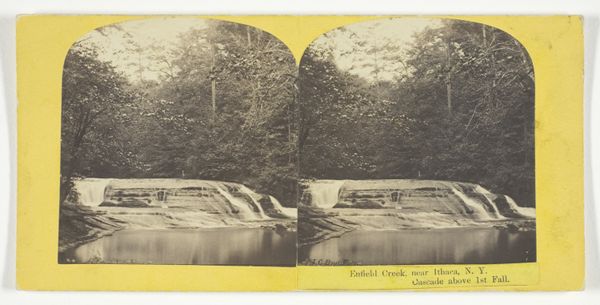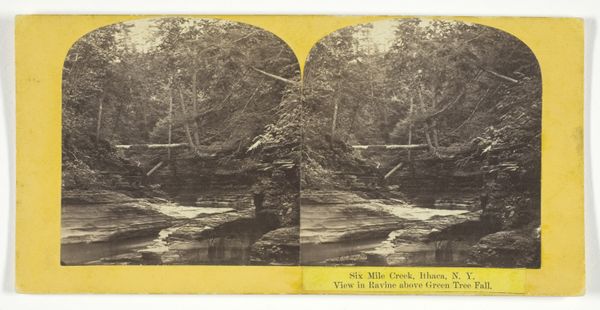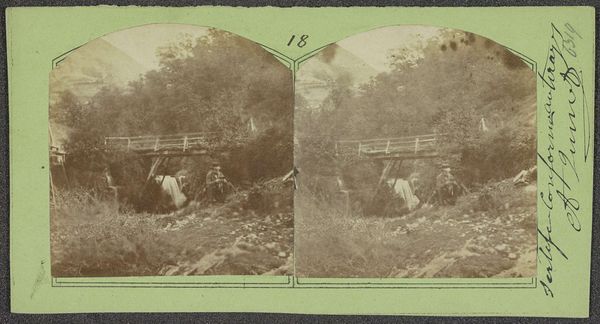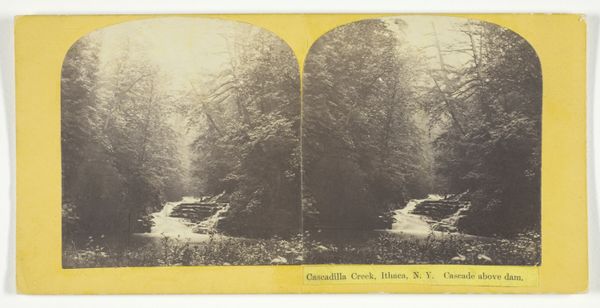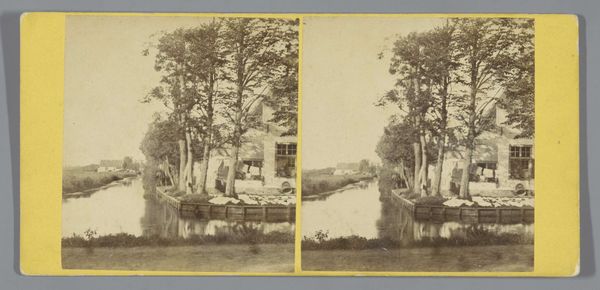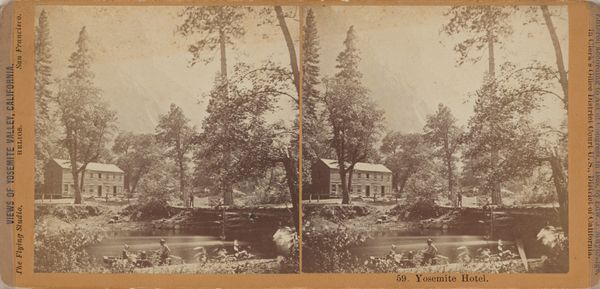
Buttermilk Creek, Ithaca, N.Y. View looking down 1st and 2d Falls, 207 feet 1860 - 1865
0:00
0:00
Dimensions: 7.5 × 7.2 cm (each image); 8.4 × 17.1 cm (card)
Copyright: Public Domain
J.C. Burritt created this stereograph of Buttermilk Creek in Ithaca, New York. The composition is neatly divided into three horizontal bands, the foreground of the creek, the midground of lush trees, and the background of a muted sky, all framed within an arched vignette. The stereograph offers more than just a picturesque scene; it engages with the burgeoning understanding of spatial perception in the 19th century. By presenting two slightly different perspectives of the same view, Burritt invites the viewer to merge these images, creating a three-dimensional effect that mimics human vision. This was not merely an aesthetic trick; it was a direct engagement with contemporary theories about how we perceive depth and space, challenging traditional notions of perspective. Consider how the stereograph, as a medium, disrupts the conventional experience of landscape art. It isn’t a painting to be passively admired, but an interactive device that requires participation from the viewer. This active role destabilizes the fixed meaning of the landscape, turning it into a dynamic, sensorial experience, always shifting with the viewer’s perspective.
Comments
No comments
Be the first to comment and join the conversation on the ultimate creative platform.
